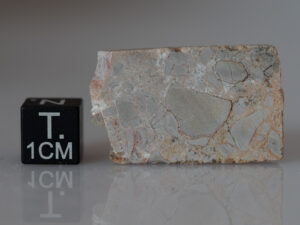Description
I suggest not to open the membrane box as the stone is extremely friable.
From Wikipedia
The Cretaceous–Paleogene (K–Pg) boundary, formerly known as the Cretaceous–Tertiary (K–T) boundary, is a geological signature, usually a thin band of rock containing much more iridium than other bands. The K–Pg boundary marks the end of the Cretaceous Period, the last period of the Mesozoic Era, and marks the beginning of the Paleogene Period, the first period of the Cenozoic Era. Its age is usually estimated at around 66 million years, with radiometric dating yielding a more precise age of 66.043 ± 0.011 Ma.
The K–Pg boundary is associated with the Cretaceous–Paleogene extinction event, a mass extinction which destroyed a majority of the world’s Mesozoic species, including all dinosaurs except for birds.
Strong evidence exists that the extinction coincided with a large meteorite impact at the Chicxulub crater and the generally accepted scientific theory is that this impact triggered the extinction event.
The word “Cretaceous” is derived from the Latin “creta” (chalk). It is abbreviated K (as in “K–Pg boundary”) for its German translation “Kreide” (chalk).
Trochu is a town of Alberta in Canada. Trochu KT boundary is probably made of forest remains from the KT event.




